
Tokyo Tower has been a symbol of Japan since it began overlooking Tokyo in 1958. In 2012, a new symbol of Japan took form with the completion of Tokyo Skytree. Both function as telecommunications towers, and their beautiful appearances adorning the city also make them highly popular Tokyo tourist spots.
So, which is the true symbol of Tokyo? What are its attractions? Do their colors and illuminations have any meaning? What is the best way to enjoy them both? Let’s take a look at and compare the attractions of each.
Checking Out Tokyo Tower and Tokyo Skytree!
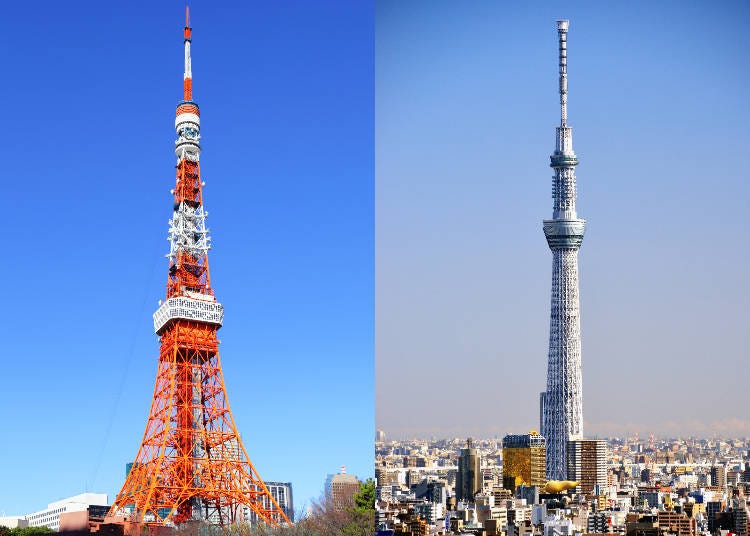
- Formal Name
- Japan Radio Tower
- Year Opened
- 1958
- Height
- 333 meters (1092.5 feet)
- Weight
- Around 4,000 tons
- Number of Visitors
- ・Total: 180,000,000
・Around 2.5 million visitors annually (as of January 2018)
- Percentage of Foreign Visitors
- Around 35%
- Tokyo Tower Observation Decks
- Main Deck (150 meters)
Top Deck (250 meters)
- Commercial Facility
- Foot Town (B1 - RF)
(Detailed description below)
- Tokyo Tower Admission
- Main Deck (150m)
・Adults, 900 yen
・Children (elementary-middle school), 500 yen
・Children age 4+, 400 yen
- Tokyo Tower Hours
- Main Deck: 9AM-11PM (last admission, 10:30PM)
Top Deck: 9AM - 10:15PM (last tour: 10:15PM)
- Tokyo Tower Mascot
- Noppon
- Formal Name
- Tokyo Skytree
- Year Opened
- 2012
- Height
- 634 meters (2080 feet)
- Weight
- Around 36,000 tons
- Number of Visitors
- ・Total: 26,310,000
・Around 4.5 million visitors annually (as of May 2017)
- Percentage of Foreign Visitors
- Around 20%
- Skytree Observation Decks
- Observation Deck (350m)
Observation Corridor (450m)
- Commercial Facility
- Tokyo Solamachi (B3 - 31F)
- Skytree Admission
- Tembo Deck (450m)
・18 years and older, 2,060 yen
・Ages 12-17, 1,540 yen
・Ages 6-11, 930 yen
・Ages 4-5, 620 yen
Tembo Corridor (350m)
・18 years and older, 1,030 yen
・Ages 12-17, 820 yen
・Ages 6-11, 510 yen
・Ages 4-5, 310 yen
- Skytree Hours
- Tembo Deck and Tembo Corridor: 8:00AM - 9:45PM
tokyo Solamachi: 10:00AM - 9:00PM; Restaurant floor: 11:00AM - 11:00PM
- Skytree Mascot
- Solakala-chan

There is more to enjoy than just the view! Each tower has a number of facilities within it, including gift shops, restaurants, theme parks, and an aquarium. Take time to visit these areas, too, to make your visit even more memorable.
Inside Tokyo Tower: Looking at Foot Town

There are attractions here that you cannot enjoy anywhere else: live entertainment, special events, shops, restaurants, and cafes. There are also translation services such as QR code readers and animations with subtitles enabling visitors from abroad to enjoy them, too.
Here you will also find limited edition goods and whether you are a fan or not, this is one area we highly recommend you visit when you come to Tokyo Tower.

Hours: 10 am - 10 pm (Last admission at 9 pm)
Admission fee: (tickets for that day)
Live & Park Pass
19 and older: 3,200 yen
13 – 18 years old: 2,700 yen
4 – 12 years old: 1,600 yen
Park Pass
19 and older: 2,200 yen
13 – 18 years old: 1,700 yen
4 – 12 years old: 600 yen
Tokyo Tower Aquarium
More than 900 varieties of aquarium fish from around the world numbering 50,000 in total are on display. Said to be one of the largest displays of its kind the narrow tanks are skillfully arranged in the facility. Not only are there unusual fish on display that you are unlikely to see in other aquariums, but even more surprising is that it is even possible to purchase the fish being displayed. The background music for each section has been selected for each region and there are explanations about the natural habitats of the fish.
Hours: 10:30 am - 7 pm
Admission fee: Adults (16 and older), 1,080 yen; Children (1 and older), 600 yen; Senior (65+), 600 yen
* Proof of age required for Senior admission fee
Inside Tokyo Skytree: Introducing Solamachi
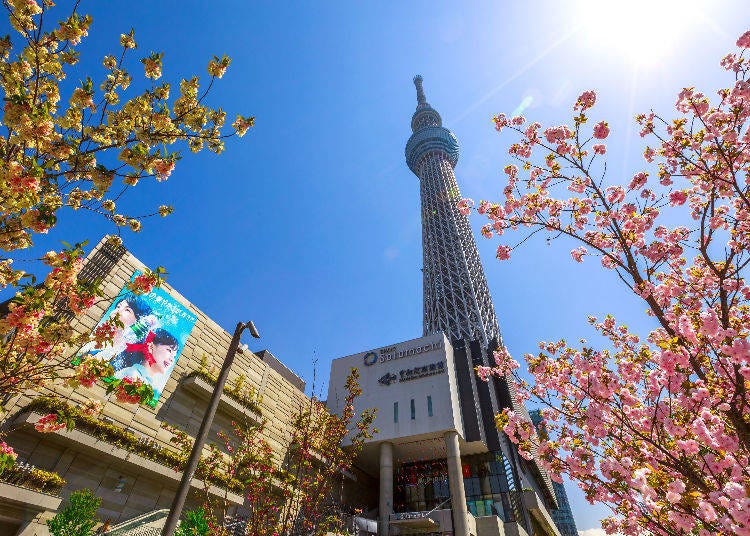
Konica Minolta Planetarium "Tenku"
Experience the feeling of a star-studded sky enhanced by light, music and computer graphics. There is also an aromatic healing program that provides a very relaxing experience.
Planetarium
Crescent Moon:
Elementary school age and above for 2 people 4,000 yen per seat (for 2 people)
* Price is the same even if only 1 person uses it.
* Up to 1 pre-elementary school aged child exempted.
General:
Adult (Jr. high and older) 1,500 yen/person
Child (4 yr. and older) 900 yen/person
Healing Planetarium
Crescent Moon: Elementary school age and above for 2 people (Pre-elementary aged children not allowed) 4,400 yen per seat (for 2 people)
* Price is the same even if only 1 person uses it.
General: Elementary aged and older (Pre-elementary aged children not allowed) 1,700 yen/person
Sound Dome
Crescent Moon:
Elementary school age and above for 2 people 4,400 yen per seat (for 2 people)
* Price is the same even if only 1 person uses it.
* Up to 1 pre-elementary school aged child exempted.
General:
Adult (Jr. high and older) 1,500 yen/person, Child (4 yr. and older) 900 yen/person
Hours: 11 am - 9 pm
Sumida Aquarium
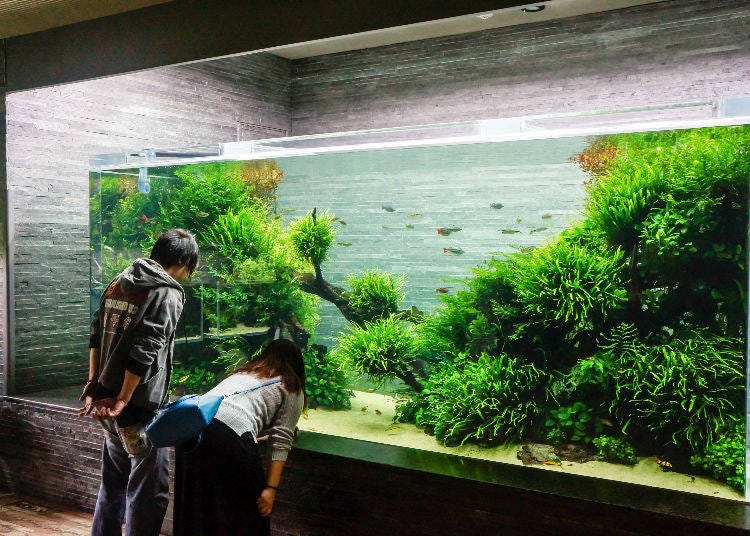
The water in these tanks use sea water artificially made (excluding fresh water tanks). It is one of the largest indoor open tanks in the country enabling you to see penguins and fur seals up close and in the park yard zone you can tour the area where the animals are kept.
Hours: 9 am - 9 pm
Admission: Adults, 2,050 yen; High School Students, 1,500 yen; Jr. High and Elementary school aged, 1,000 yen; 3 yrs and older, 600 yen
-
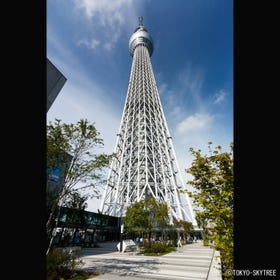
-
Address
1-1-2 Oshiage, Sumida Ward, Tokyo, 131-0045
View Map -
Nearest Station
Tokyo Skytree Station (Tobu Isesaki Line (Tobu Skytree Line))
- Phone Number 0570-55-0634
-
Address
1-1-2 Oshiage, Sumida Ward, Tokyo, 131-0045
Why Were Tokyo Tower and Tokyo Skytree Built?
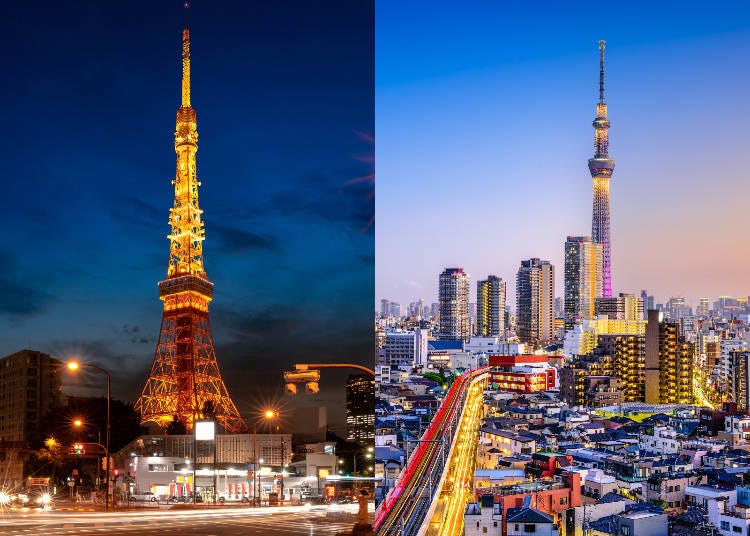
Both were built to be used as telecommunications towers. When Tokyo Tower was constructed in the 1950s, Japan was just in the midst of economic recovery. At that time there were TV radio towers in six locations, but a single tower capable of covering all areas would need to be more than 300 meters tall.
At that time, Japan wanted to make a tower taller than the 312-meter tall Eiffel Tower to make it the tallest in the world. For 60 years Tokyo Tower has represented the realization of those dreams and continues to be a symbol of Japan. After the construction of Tokyo Skytree was completed in 2012, which made it the tallest tower in Tokyo, Tokyo Tower assumed an auxiliary role for use in times of disasters.

Do you notice a resemblance between the Eiffel Tower on the left and Tokyo Tower?
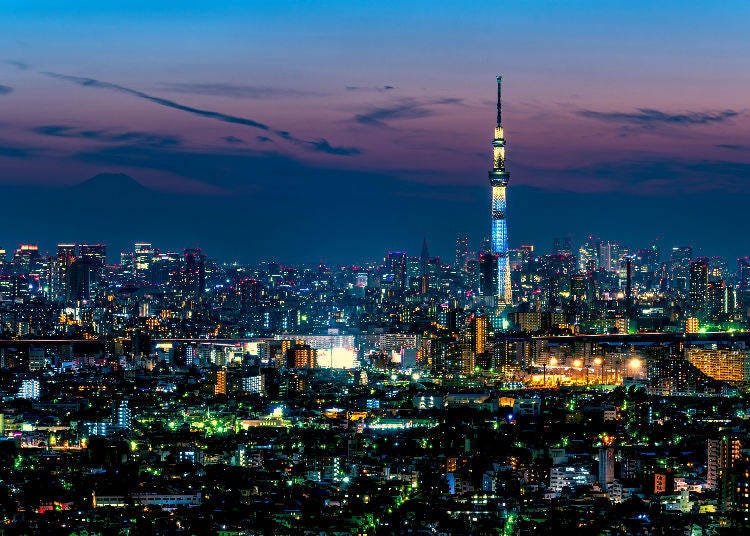
In order to keep up with the changing times, a taller telecommunications tower was needed, and when its construction was completed in 2012, Skytree Tokyo assumed that role. Situated in the middle of Tokyo, a forest of skyscrapers eventually arose around Tokyo Tower making the broadcast of radio waves more difficult. Also in 2006 one-segment broadcasts and multi-media broadcasting began for handheld devices, so to meet these new needs, a tower more than 600 meters tall was needed. After that, tall towers sprang up around the world, but when Tokyo Skytree was completed in 2012 it became the tallest in the world. Currently NHK and five commercial networks use the tower for their broadcasts and it also has disaster prevention functions for use in times of disasters.
Tokyo Skytree and Skyscrapers Around the World
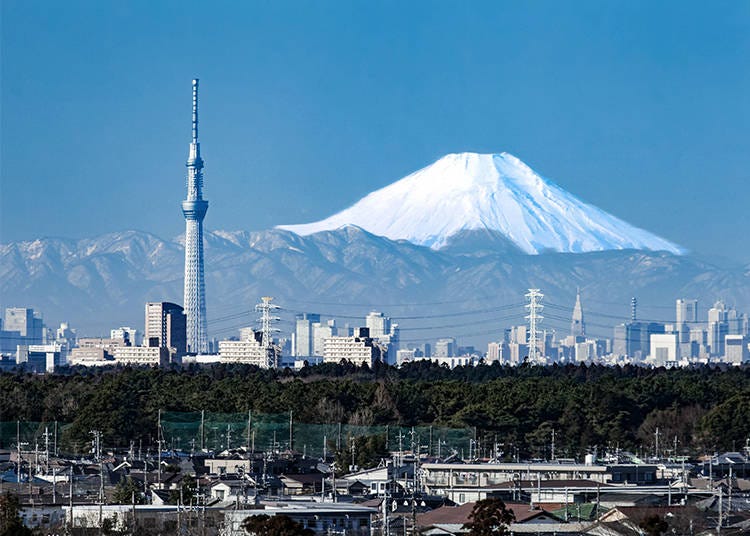
As of May 2018, Tokyo Skytree is the tallest free-standing tower (a tower excluding a branch tower) in the world and when compared to all architectural structures, it is the second-tallest overall.
There are various ways for ranking height, such as the height of the observation deck. The world has seen a surge in the construction of ultra-high buildings. Lubricated by oil money in the Middle East and the economic development of China, the record for the tallest structure continues to be rewritten.
The following is a ranking of the world’s 10 tallest towers and buildings.
- #1
- Tokyo Skytree (634m / Tokyo, Japan)
- #2
- Canton Tower (600m, Guangzhou, China)
- #3
- CN Tower (553m / Toronto, Canada)
- #4
- Ostankino Tower (537m / Moscow, Russia)
- #5
- The Oriental Pearl Radio & TV Tower (468m / Shanghai, China)
- #6
- Milad Tower (435m / Tehran, Iran)
- #7
- Kuala Lumpur Tower (435m / Kuala Lumpur, Malaysia)
- #8
- Tianjin Radio and Television Tower (415m / Tianjin, China)
- #9
- Central Radio & Television Tower (405m / Beijing, China)
- #10
- Kiev Tower (385m / Kiev, Ukraine)
- #1
- Burj Khalifa (828m / Dubai, UAE)
- #2
- Shanghai Tower (632m / Shanghai, China)
- #3
- Abraj Al Bait Towers (601m / Makkah, Saudi Arabia)
- #4
- Ping An International Finance Centre (600m / Shenzhen, China)
- #5
- Golden Finance 117 (597m / Tianjin, China)
- #6
- Lotte World Tower (555m / Seoul, Korea)
- #7
- One World Trade Center (541m / New York, USA)
- #8
- CTF Finance Centre (530m / Guangzhou, China)
- #9
- Taipei 101 (509m / Taipei, Taiwan)
- #10
- Shanghai World Financial Center (492m / Shanghai, China)
The Jeddah Tower in Jeddah, Saudi Arabia is scheduled for completion in 2020. Another possible name for it being Kingdom Tower, it will be 1,008 meters tall! It will be the first building ever to surpass the 1,000 meter height and it will then be the tallest structure in the world.
The 636-meter tall Wuhan Greenland Center in Wuhan, China is expected to be completed in 2019, eclipsing Tokyo Skytree and putting it in the number 1 position.
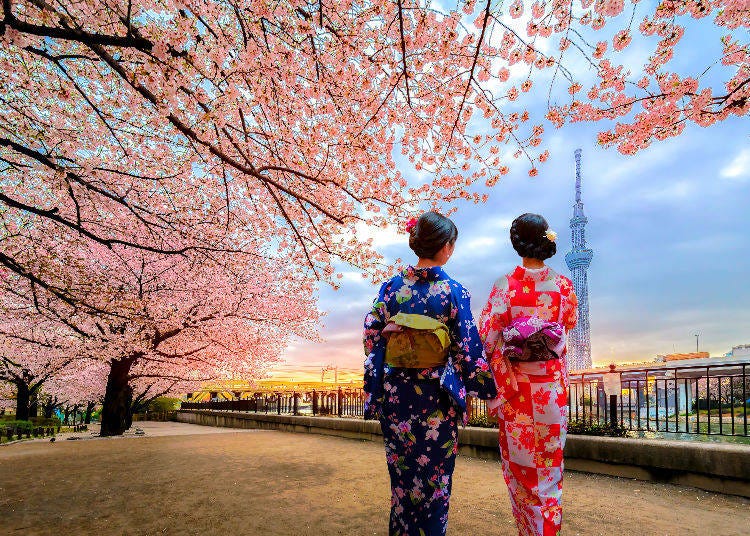
Tokyo Tower and Tokyo Skytree are the new and old symbols of Tokyo. The beautiful style of Tokyo Tower nostalgically reminds us of Japan during its postwar economic recovery and its popularity has withstood the trials of time remaining loved by old and young, men and women, and people from around the world to this day. Tokyo Skytree represents a new age with its stylish form and advanced technology that makes it capable of withstanding the many earthquakes that frequently shake Japan. Both towers are symbolic of Tokyo and afford majestic views of the city. We hope you will visit them both.
Tokyo Tower in Related Articles
- Area
- Category
*Prices and options mentioned are subject to change.
*Unless stated otherwise, all prices include tax.
Popular Tours & Activitiess
Recommended places for you
-
Ad

Discover the "Miraculous Forest" in the Heart of Tokyo: The Institute for Nature Study (9 Minutes from JR Meguro Station)
-
Ad

[Tokyo, Ueno] Journey to the Sacred Grounds of the Tokugawa Shoguns: Join the "EDO SHOGUN’S LEGACY TRAIL TOUR" – Where Special Access, Modern Art, and Digital Innovation Converge
by: Guest Contributor
-

Jujutsu Kaisen Takes Over JR East With a Wrapped Shinkansen This Winter
by: Guest Contributor
-

This Winter, Godzilla Takes Over Haneda Airport
by: Guest Contributor
-

Japan’s Shinkansen Is About to Change Travel in an Unexpected Way
by: Guest Contributor
-

New in Ginza! Air BicCamera Ginza Opens with a Faster, More Convenient Shopping Experience
by: Guest Contributor
Inspiration for Accommodations
-

Enjoy Mt. Fuji from the Comfort of Your Room! Recommended Ryokan with Mt. Fuji View
-

Stay Near the Cherry Blossoms! Hotels for Cherry Blossom Viewing in Tokyo
-

Family-Friendly Hotels with Free Shuttle to Disneyland: Convenient Access for a Magical Stay
-

Top Ranked Hakone Hotels with Mt. Fuji View: Enjoy Stunning Scenery from Your Private Space
-

Convenient Tokyo Hotels with Airport Shuttle: Ideal for Families and Heavy Luggage
-

Stunning Tokyo Tower View Hotels: Enjoy Spectacular Scenery from Your Private Space
-

Convenient Asakusa Hotels with Kitchens: Ideal for Extended Family Visits
-

Experience Luxury: Hakone's 10 Best Five-Star Accommodations
-

Enjoy Mt. Fuji Autumn Leaves! Top Hotels Near the Popular Autumn Leaves Corridor
-

Experience Hakone Fall Foliage from Your Room with Stunning Views
-

Tokyo Tower vs. Tokyo Skytree: Spice Up Your Sightseeing Adventure with Fun Trivia!
-

Incredible Views of Tokyo: Inside Tokyo Tower's Top Deck Tour
-

6 Fun Things to Do at Tokyo's World-Famous Tsukiji Outer Market!
-

Kichijoji – Explore Tokyo’s Top-Rated Stylish Suburb in Half a Day!
-

Atami 1-Day Itinerary: Exploring Japan's Castle & Hot Springs Resort Town Near Tokyo!
-

10 Steps to Become an Expert on Tokyo Station
- #best ramen tokyo
- #what to buy in ameyoko
- #what to bring to japan
- #new years in tokyo
- #best izakaya shinjuku
- #things to do tokyo
- #japanese nail trends
- #what to do in odaiba
- #onsen tattoo friendly tokyo
- #daiso
- #best sushi ginza
- #japanese convenience store snacks
- #best yakiniku shibuya
- #japanese fashion culture
- #best japanese soft drinks




















